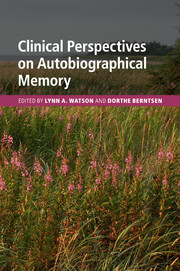Book contents
- Clinical Perspectives on Autobiographical Memory
- Clinical Perspectives on Autobiographical Memory
- Copyright page
- Contents
- Figures
- Tables
- Contributors
- Preface
- Book part
- 1 Introduction
- Part I Trauma and autobiographical memory
- Part II Intrusive and involuntary memories
- 6 Intrusive reexperiencing in posttraumatic stress disorder: memory processes and their implications for therapy
- 7 Mental imagery in psychopathology: from the lab to the clinic
- 8 Intrusive, involuntary memories in depression
- 9 From everyday life to trauma: research on everyday involuntary memories advances our understanding of intrusive memories of trauma
- Part III Overgeneral autobiographical memories and their mechanisms
- Part IV Autobiographical memory, identity, and psychological well-being
- Part V Discussion
- Index
- References
6 - Intrusive reexperiencing in posttraumatic stress disorder: memory processes and their implications for therapy
from Part II - Intrusive and involuntary memories
Published online by Cambridge University Press: 05 March 2015
- Clinical Perspectives on Autobiographical Memory
- Clinical Perspectives on Autobiographical Memory
- Copyright page
- Contents
- Figures
- Tables
- Contributors
- Preface
- Book part
- 1 Introduction
- Part I Trauma and autobiographical memory
- Part II Intrusive and involuntary memories
- 6 Intrusive reexperiencing in posttraumatic stress disorder: memory processes and their implications for therapy
- 7 Mental imagery in psychopathology: from the lab to the clinic
- 8 Intrusive, involuntary memories in depression
- 9 From everyday life to trauma: research on everyday involuntary memories advances our understanding of intrusive memories of trauma
- Part III Overgeneral autobiographical memories and their mechanisms
- Part IV Autobiographical memory, identity, and psychological well-being
- Part V Discussion
- Index
- References
- Type
- Chapter
- Information
- Clinical Perspectives on Autobiographical Memory , pp. 109 - 132Publisher: Cambridge University PressPrint publication year: 2015
References
- 6
- Cited by



